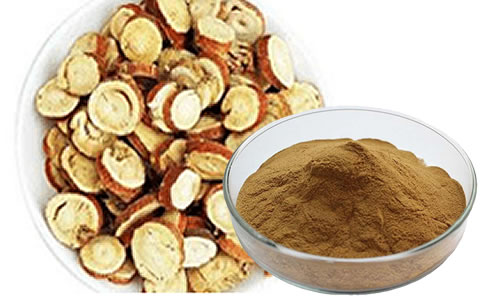[introduction to liquorice]:
Glycyrrhiza uralensis Fisch (scientific name: Glycyrrhiza uralensis Fisch) alias: old man, sweet grass, Ural liquorice, sweet root. Legume and liquorice are perennial herbs with thick roots and rhizomes. They are a kind of tonic Chinese herbal medicine. It is a good medicine for human body. The medicinal parts are roots and rhizomes. The root of the medicine is cylindrical, 25-100 cm long and 0.6-3.5 cm in diameter. The surface of the skin is reddish brown or grayish brown. The rhizome is cylindrical with bud mark on the surface and pith in the middle of the section. Qi is tiny, sweet and special. Its main functions are clearing away heat and detoxification, eliminating phlegm and relieving cough, Wanfu, etc. It likes the dry climate with dark damp, long sunshine and low temperature. Licorice grows mostly in arid and semi-arid desert grassland, desert edge and loess hilly area. Roots and rhizomes are used for medicine.

[material form]:
The dry roots of are long cylindrical, unbranched, with segments of 30-120 cm in length and 0.6-3.3 cm in diameter. Licorice with skin has different tightness, reddish brown, brown or grayish brown, with significant wrinkles, furrows and sparse fine root marks. The pores of licorice are transverse, slightly protruding and dark yellow. The cut planes at both ends are flush, and the middle of the cut plane is slightly depressed. The quality is solid and heavy. Cross section fiber, yellow white, powdery, with an obvious ring and chrysanthemum heart, often forming cracks. It has a special fragrance, sweet and special. The shape of rhizome is similar to that of root, but there are bud marks on the surface and pith in the center of cross section. The appearance of meadows is flat, light yellow, fibrous, with longitudinal cracks. Licorice with skin is the best with fine and tight skin, wrinkled furrow, reddish brown, solid quality, pink foot and yellow white cross section; rough skin, gray brown, loose quality, small powder and dark yellow cross section are the second; those with brown black skin, hard quality, brown yellow cross section and bitter taste are not allowed to be used as medicine. Powder grass is better than licorice with skin.
[chemical composition]:
Glycyrrhiza uralensis contains many chemical components, including glycyrrhizic acid, glycyrrhizin and so on. The chemical composition of Glycyrrhiza uralensis Fisch is very complex. So far, the compounds isolated from Glycyrrhiza uralensis Fisch include glycyrrhizin, glycyrrhetinic acid, glycyrrhizin, isoliquiritigenin, neoisoliquiritigenin, glycyrrhizin, isoliquiritol, isoliquiritol, 7-methylcoumarin, umbelliferone and so on. But these compounds and quantities usually follow Glycyrrhiza uralensis Fisch The species, planting area, harvesting time and other factors are different. A large number of studies have shown that glycyrrhizin and flavonoids are the most important bioactive substances in Glycyrrhiza, which mainly exist in the epidermis of Glycyrrhiza root.
[identification method]:
(1) 0.5% ethanol solution 1ml plus 1% ferric chloride ethanol solution 2-3 drops, should produce blue-green to purple precipitation.
(2) take 2-3ml of 0.5% ethanol solution, add 3% sodium carbonate solution of equal capacity to boil for 3min in the water bath, after cooling, add the newly prepared diazotization solution (a solution: 0.5g p-nitroaniline dissolved in 5ml hydrochloric acid, constant volume of water to 50ml, B solution: 10% nitrite solution). When it is used, mix 1-2 drops of liquid a and liquid B according to the same volume, which should be turbid and crimson.
(3) sample 1g is refluxed with dichloromethane 20ml for 10min, filtered, and dichloromethane is volatilized, the concentrate is dissolved and filtered with 50% ethanol 20ml, the filtrate is collected, 1ml of the filtrate is taken into the test tube, and 2-3 drops of ferric chloride test solution (1 + 100 ethanol) are added, which should be brown.